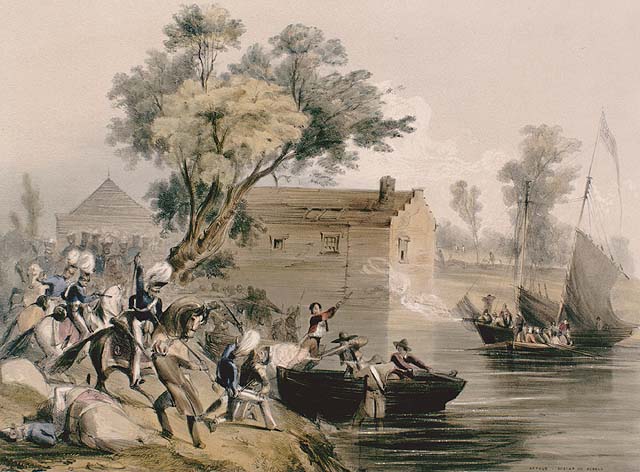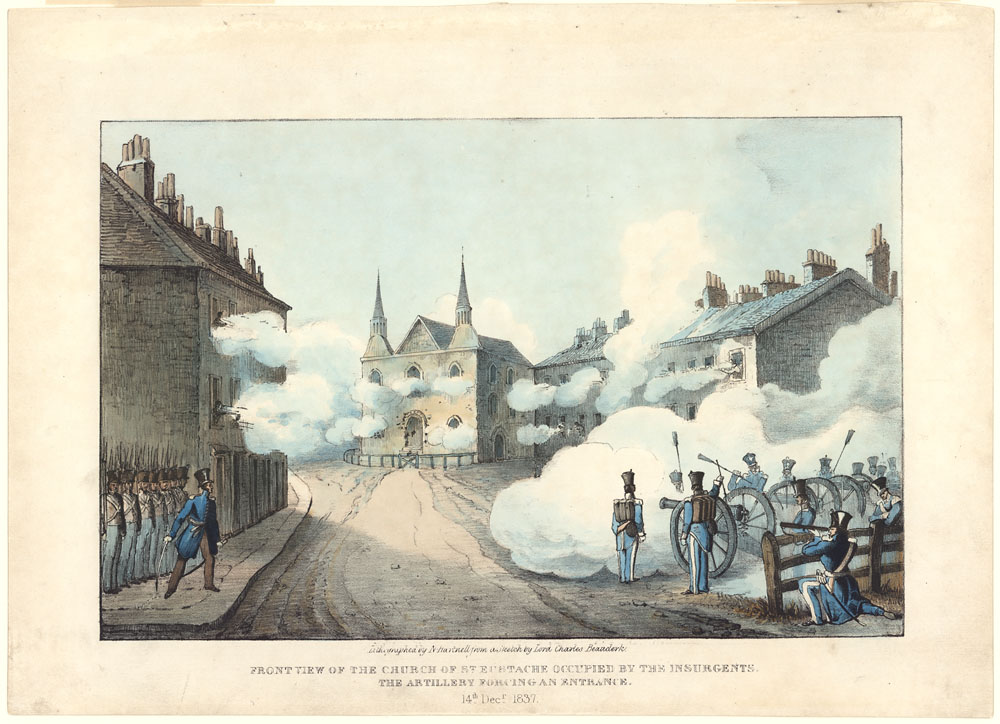Browse "Things"
-
Macleans
RCMP Recreates Historic March
Growing up in the small town of Hartney in the southwest corner of Manitoba, Grant Little believed that the Royal Canadian Mounted Police "hung the moon.This article was originally published in Maclean's Magazine on July 12, 1999
"https://development.thecanadianencyclopedia.ca/images/tce_placeholder.jpg?v=e9dca980c9bdb3aa11e832e7ea94f5d9" // resources/views/front/categories/view.blade.php
https://development.thecanadianencyclopedia.ca/images/tce_placeholder.jpg?v=e9dca980c9bdb3aa11e832e7ea94f5d9
-
Article
RCMP Troop 17
On 16 September 1974, thirty-two women from across Canada made history when they were sworn in as the first female officers in the Royal Canadian Mounted Police (RCMP). Known as Troop 17, they paved the way for equal opportunity in national law enforcement. In 2023, approximately 22 per cent of RCMP officers are women.
"https://d2ttikhf7xbzbs.cloudfront.net/media/media/1703ee6f-bab8-4f7e-9f0d-9ff5c82dfea3.jpg" // resources/views/front/categories/view.blade.php
https://d2ttikhf7xbzbs.cloudfront.net/media/media/1703ee6f-bab8-4f7e-9f0d-9ff5c82dfea3.jpg
-
Article
Rebellion in Lower Canada (The Patriots' War)
In 1837 and 1838, French Canadian militants in Lower Canada took up arms against the British Crown in a pair of insurrections. The twin rebellions killed more than 300 people. They followed years of tensions between the colony’s anglophone minority and the growing, nationalistic aspirations of its francophone majority. The rebels failed in their campaign against British rule. However, their revolt led to political reform, including the unified Province of Canada and the introduction of responsible government. The rebellion in Lower Canada, which is also known as the Patriots' War (la Guerre des patriotes), also gave French Canadians one of their first nationalist heroes in Louis-Joseph Papineau.
"https://d2ttikhf7xbzbs.cloudfront.net/media/media/37aadc48-3f88-4946-a9aa-0d2ad30495cd.jpg" // resources/views/front/categories/view.blade.php
https://d2ttikhf7xbzbs.cloudfront.net/media/media/37aadc48-3f88-4946-a9aa-0d2ad30495cd.jpg
-
Timelines
Rebellion in Lower Canada
French Canadian militants in Lower Canada took up arms against the British Crown in a pair of insurrections in 1837 and 1838. The twin rebellions, which killed more than 300 people, followed years of tensions between the colony's anglophone minority and the growing, nationalistic aspirations of its francophone majority.
"https://d2ttikhf7xbzbs.cloudfront.net/media/media/37aadc48-3f88-4946-a9aa-0d2ad30495cd.jpg" // resources/views/front/categories/view.blade.php
https://d2ttikhf7xbzbs.cloudfront.net/media/media/37aadc48-3f88-4946-a9aa-0d2ad30495cd.jpg
-
Article
Rebellion in Upper Canada
The 1837 rebellion in Upper Canada was a less violent, more limited affair than the uprising earlier that year in Lower Canada. However, its leaders, including William Lyon Mackenzie, were equally serious in their demands. They wanted democratic reform and an end to the rule of a privileged oligarchy. The rebellion itself failed, but its very failure helped pave the way for moderate and careful political change in British North America. This included the union of Upper and Lower Canada into the Province of Canada and the eventual introduction of responsible government.
"https://d2ttikhf7xbzbs.cloudfront.net/media/media/ab6ffbc8-72e2-4fc1-9007-43a1b2c8948d.jpg" // resources/views/front/categories/view.blade.php
https://d2ttikhf7xbzbs.cloudfront.net/media/media/ab6ffbc8-72e2-4fc1-9007-43a1b2c8948d.jpg
-
Timelines
Rebellion in Upper Canada
The 1837 rebellion in Upper Canada was a less violent, more limited affair than the insurrection that same year in neighbouring Lower Canada, although its leaders, including William Lyon Mackenzie, were no less serious in their demands for democratic reform, and an end to the rule of a privileged oligarchy.
"https://d2ttikhf7xbzbs.cloudfront.net/media/media/397922a7-5fe3-4b4a-9a76-48f9660df33c.jpg" // resources/views/front/categories/view.blade.php
https://d2ttikhf7xbzbs.cloudfront.net/media/media/397922a7-5fe3-4b4a-9a76-48f9660df33c.jpg
-
Article
Rebellion Losses Bill
Rebellion Losses Bill, modelled on Upper Canadian legislation, was introduced by Louis LaFontaine in Feb 1849 to compensate Lower Canadians whose property had been damaged during the Rebellions of 1837-38 (totalling approximately £100,000).
"https://development.thecanadianencyclopedia.ca/images/tce_placeholder.jpg?v=e9dca980c9bdb3aa11e832e7ea94f5d9" // resources/views/front/categories/view.blade.php
https://development.thecanadianencyclopedia.ca/images/tce_placeholder.jpg?v=e9dca980c9bdb3aa11e832e7ea94f5d9
-
Timelines
Rebellions of 1837
Upper and Lower Canada were thrown into turmoil from 1837–38, when insurgents mounted rebellions in each colony against the Crown and the political status quo. The revolt in Lower Canada was the more serious and violent of the two.
"https://d2ttikhf7xbzbs.cloudfront.net/media/media/60538dc0-6c34-4995-ac89-c46b4b5d2796.jpg" // resources/views/front/categories/view.blade.php
https://d2ttikhf7xbzbs.cloudfront.net/media/media/60538dc0-6c34-4995-ac89-c46b4b5d2796.jpg
-
Article
Rebellions of 1837–38 (Plain-Language Summary)
In 1837 and 1838, insurgents in Upper and Lower Canada led armed rebellions against the Crown. The two uprisings left 325 people dead. The revolt in Lower Canada was more serious and violent than the rebellion in Upper Canada. The events of 1837 led to the Durham Report (1839). It led to the Act of Union in 1841. The Act merged the two colonies into the Province of Canada. It also led to responsible government. These were important steps in Canada’s path to becoming a country. This article is a plain-language summary of the Rebellions of 1837–38. If you would like to read about this topic in more depth, please see our full-length entry: Rebellions of 1837–38.
"https://d2ttikhf7xbzbs.cloudfront.net/media/media/e6a801ef-a427-4be1-b758-2bd5f812d3b8.jpg" // resources/views/front/categories/view.blade.php
https://d2ttikhf7xbzbs.cloudfront.net/media/media/e6a801ef-a427-4be1-b758-2bd5f812d3b8.jpg
-
Article
Recession in Canada
A recession is a temporary period of time when the overall economy declines; it is an expected part of the business cycle. This period usually includes declines in industrial and agricultural production, trade, incomes, stock markets, consumer spending, and levels of employment. In purely technical terms, a recession occurs when two or more successive quarters (six months) show a drop in real gross domestic product (GDP), i.e., the measure of total economic output in the economy after accounting for inflation. In this sense, recessions are broad and can be particularly painful and challenging times for a country. This is the full-length entry about Recession in Canada. For a plain-language summary, please see Recession in Canada (Plain-Language Summary).
"https://d2ttikhf7xbzbs.cloudfront.net/media/media/df43d50d-712c-449e-9d95-d9b386ed67aa.jpg" // resources/views/front/categories/view.blade.php
https://d2ttikhf7xbzbs.cloudfront.net/media/media/df43d50d-712c-449e-9d95-d9b386ed67aa.jpg
-
Article
Recession in Canada (Plain-Language Summary)
A recession can mean “going down.” The word “recession” is often used when talking about the economy. An economic recession is a time when the economy is going down. Production goes down. Spending goes down. Stock markets go down. Overall, the gross domestic product (GDP) goes down. GDP is the amount of goods and services produced in a country. A recession happens when the economy goes down for more than a few months. Recessions occur often, and they cause many problems for individuals and businesses. This article is a plain-language summary of Recession in Canada. If you are interested in reading about this topic in more depth, please see our full-length entry, Recession in Canada.
"https://d2ttikhf7xbzbs.cloudfront.net/media/media/fe9a7876-aee1-4ecb-865f-03fa3233f06e.jpg" // resources/views/front/categories/view.blade.php
https://d2ttikhf7xbzbs.cloudfront.net/media/media/fe9a7876-aee1-4ecb-865f-03fa3233f06e.jpg
-
Article
Recession of 2008–09 in Canada
The global financial crisis that began in 2007 dragged much of the world economy into recession, and Canada was not spared. Although the effects on Canada were milder than on the United States and in Europe, the Canadian recession of 2008–09 was still severe enough to generate sharp declines in output and employment and to require significant responses by Canadian policy-makers.
"https://d2ttikhf7xbzbs.cloudfront.net/media/media/df43d50d-712c-449e-9d95-d9b386ed67aa.jpg" // resources/views/front/categories/view.blade.php
https://d2ttikhf7xbzbs.cloudfront.net/media/media/df43d50d-712c-449e-9d95-d9b386ed67aa.jpg
-
Article
Reciprocity
Reciprocity was a free trade agreement between the United States and Canada. It mutually reduced import duties and protective tariffs on certain goods exchanged between the two countries. It was in effect from 1854 to 1866 and was controversial at times on both sides of the border. It was replaced in 1878 by the Conservative Party’s protectionist National Policy. It involved levying tariffs on imported goods to shield Canadian manufacturers from American competition. A narrower reciprocity agreement was introduced in 1935 and expanded in 1938. However, it was suspended in 1948 after both countries signed the General Agreement on Tariffs and Trade (GATT).
"https://d2ttikhf7xbzbs.cloudfront.net/media/media/f8f2bab3-d387-4165-9fbc-617c30019b95.jpg" // resources/views/front/categories/view.blade.php
https://d2ttikhf7xbzbs.cloudfront.net/media/media/f8f2bab3-d387-4165-9fbc-617c30019b95.jpg
-
Article
Reciprocity (Plain-Language Summary)
Reciprocity was a free trade deal between the United States and Canada. (Reciprocity is when both sides give and receive.) The deal reduced import duties and tariffs on certain goods traded between the two countries. It was in effect from 1854 to 1866. It was at times a source of great controversy in both countries. It was replaced in 1878 by the National Policy. It was a more protectionist policy. It imposed tariffs on imported goods. This shielded manufacturers in Canada from US competition. A more limited reciprocity deal was reached in 1935. It ended in 1948 after both countries signed the General Agreement on Tariffs and Trade (GATT). This article is a plain-language summary of Reciprocity. If you would like to read about this topic in more depth, please see our full-length entry: Reciprocity.
"https://development.thecanadianencyclopedia.ca/images/tce_placeholder.jpg?v=e9dca980c9bdb3aa11e832e7ea94f5d9" // resources/views/front/categories/view.blade.php
https://development.thecanadianencyclopedia.ca/images/tce_placeholder.jpg?v=e9dca980c9bdb3aa11e832e7ea94f5d9
-
Article
Reconciliation in Canada (Plain-Language Summary)
The word reconciliation is used a lot in Canada. It is closely tied with Indigenous peoples. Indigenous peoples were harmed in many ways in the past. Children were abused in residential schools. Their languages and cultures were taken from them (see Genocide and Indigenous Peoples in Canada). The key goal of reconciliation is to heal the wounds of the past and make reparations for these wounds. Reconciliation also includes making a better future. In Canada, the process of reconciliation has only recently started. The process will continue for a long time. This article is a plain-language summary of Reconciliation in Canada. If you are interested in reading about this topic in more depth, please see our full-length entry, Reconciliation in Canada.
"https://d2ttikhf7xbzbs.cloudfront.net/10022750263_777cc2f581_k-1.jpg" // resources/views/front/categories/view.blade.php
https://d2ttikhf7xbzbs.cloudfront.net/10022750263_777cc2f581_k-1.jpg
